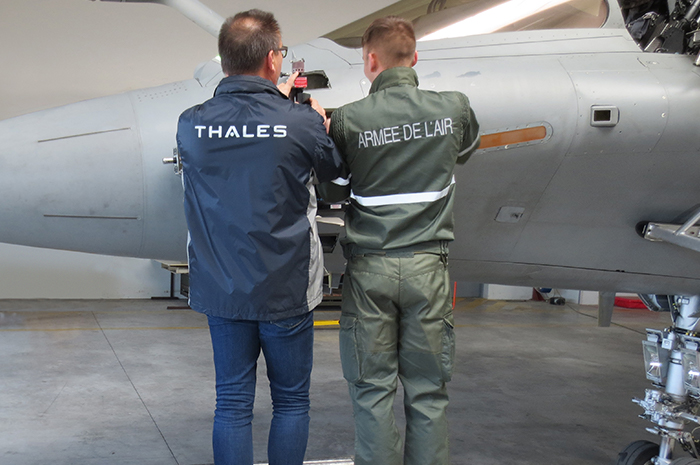Mastering action in decisive moments
Armed forces are currently being reinforced everywhere in the world. In order to guarantee their sovereignty against any eventuality, countries wish to reinforce their air superiority by acquiring new resources, particularly by ensuring the availability of combat equipment able to accomplish several missions in the course of the same sortie. These missions are: air defence, reconnaissance, precision attacks on ground targets and the detection and tracking of targets at sea.
The Dassault Aviation Rafale meets these requirements and cover all these missions, particularly thanks to Thales electronics, which approximately accounts for 25% of the value of the platform. Thales electronics is on board the Rafale for France, Egypt, Qatar, India, Greece, Croatia, UAE and Indonesia.
Thales supplies ultra-effective sensors: the fire control radar, named AESA RBE2, the self-protection system, SPECTRA, the electro-optic system, FSO, the targeting pod TALIOS and the reconnaissance system, AREOS. In parallel, Thales procures communications, navigation, identification and cockpit equipment, not forgetting electrical generators or missile seekers. Training, Simulation, support and services are also proposed.
All Thales equipment on board the Rafale aircraft contributes to the performance recorded in theatres of operation, particularly thanks to sensors, where the data is merged within the modular data processing unit, MDPU. This multi-sensor data fusion is a decisive factor, ensuring the Rafale stands out. This outcome was jointly achieved by Thales and Dassault Aviation and creates a link between the overall battle field surrounding the aircraft and the pilot's brain, with its unique ability to understand the implications of a tactical situation and take the best possible decision. Thanks to the system's computing power, the data fusion incorporates data from the AESA RBE2 electronic scanned array radar, the SPECTRA electronic warfare system, the FSO (Front Sector Optronics) system, IFF (Identification Friend or Foe) and datalinks.
By allowing the pilot to become a real tactical decision-maker rather than simply an analyst of sensors, and by equipping the Rafale with state-of-the-art equipment, Thales, along with Dassault Aviation, contributes to the air superiority of Air Forces in all decisive moments.
Equipped with the AESA RBE2 (Active Electronically Scanned Array Radar), the Rafale benefits from an electronic scanned array and an active antenna, keys to the aircraft performance. This radar is the first in Europe to be operational and have demonstrated very high proficiency in several theatres.
This radar offers multiple benefits:
- its range has been increased by more than 50% compared with fire control radars from previous generations, ensuring compatibility with weapons such as Meteor;
- the increased reliability of the active antenna modules reduces the owning cost of the radar;
- the agile wave forms can be used to obtain very high resolution synthetic aperture images (SAR) in air-to-ground mode and to increase resistance to radar jamming. In addition, the agility of the radar brings a greater robustness and allows the pilot to deal with much more complex situations compared with a conventional radar. The pilot can therefore carry out an air / air mission and an air / ground mission simultaneously. He can instantly switch from exploring airspace to illuminating a ground scene, such as performing a ground strike mission. This reinforces the omnirole capacity of the Rafale, which can carry out all kinds of missions simultaneously and offers the pilot a gain in performance.
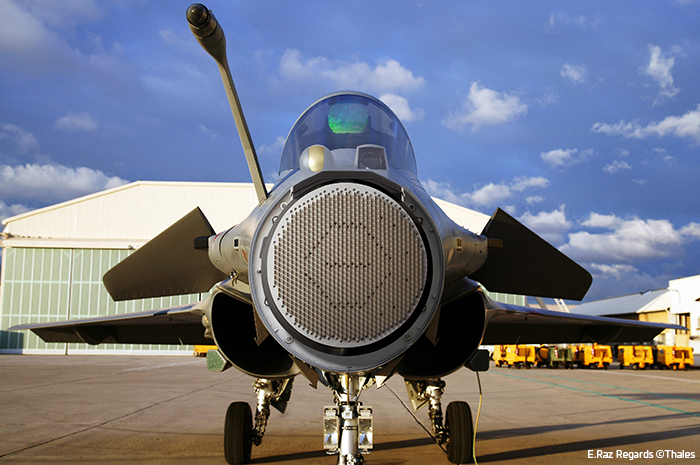
The SPECTRA (Self-Protection Equipment Countering Threats to Rafale Aircraft) electronic warfare system is totally integrated in the Rafale and boosts survivability in the context of air-to-air and air-to-ground threats.
The SPECTRA equips the Rafale with a 360° multi-spectral warning system against enemy radars, missiles and lasers. The SPECTRA can detect threats over a long range and identify and locate these threats, allowing the pilot and the system to immediately react in the most suitable manner: electromagnetic jamming, infrared decoys, manoeuvres and combined actions.
In addition, thanks to the angular precision of its locating features, SPECTRA can be used to accurately locate threats on the ground in view of avoidance and targeting.
Thanks to precise and long-range detection and location capacities for airborne targets, the system can also help to prepare an early tactical situation awareness based on a library of embedded threats, defined by users.
This library is a key component of the system's performance. The protection provided on board the Rafale can thus be constantly improved, with absolute fluidity, according to the progress and evolution of operations.
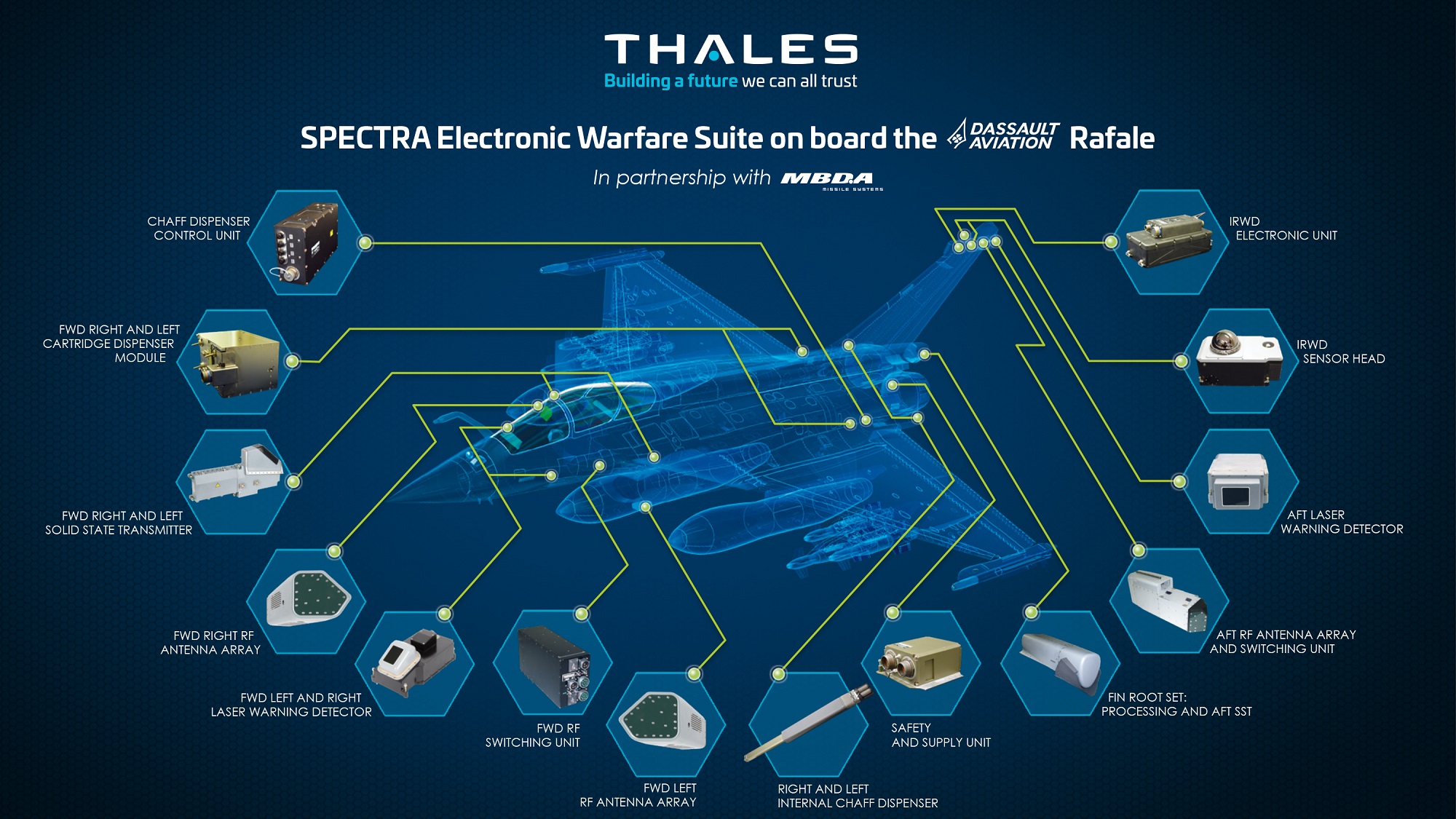
The Front Sector Optronics (FSO) is integrated in the air frame just like AESA RBE2 and SPECTRA, and can discretely detect and identify airborne, naval and land targets over a long range, with high resolution angular targeting and laser telemetrics.
This sensor operates at optical wavelengths and is invulnerable to radar jamming. FSO helps to effectively appraise the tactical situation and reinforces the aircraft's ability to operate in difficult environments.
The laser systems used to measure the distance to the target guarantee high precision 3D location for the FSO. Its visible spectrum options are particularly useful with its narrow field to identify possible targets in situations where visual contact is necessary according to combat rules, or with warnings requiring a rapid response.
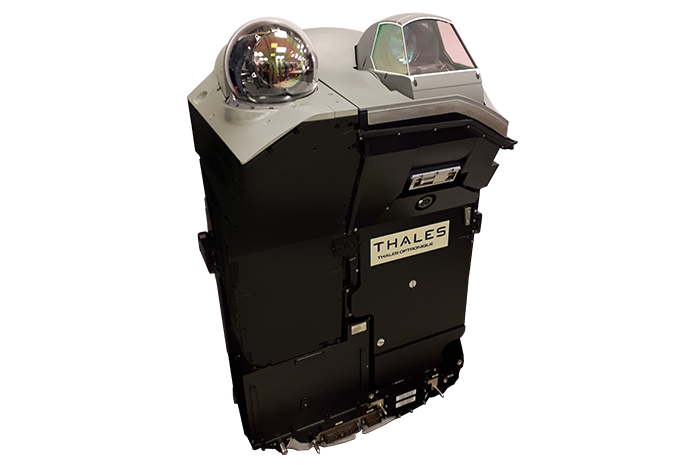
The TALIOS (Targeting Long-range Identification Optronic System) pod is equipped with top-down and bottom-up datalinks, and covers the entire range of missions, from intelligence to acquiring and pursuing targets. The pod is able to scan a large area, identify targets and immediately switch to acquisition and pursuit mode for these targets.
Its high resolution and ability to see the colour situation simplifies the tasks of crew. Thales has also developed the "Permanent Vision" mode to assist pilots. This mode can be used to incorporate the image entered by TALIOS in a 3D map. The crew can therefore accurately locate the area filmed by the pod. Several visual indicators provide complementary real-time information on the tactical situation.
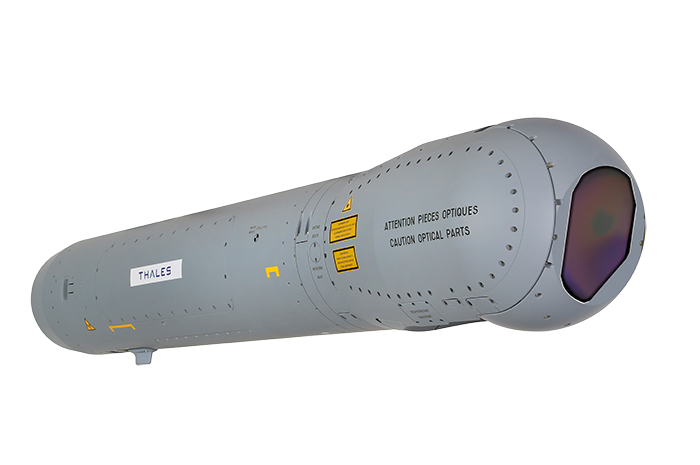
The AREOS (Airborne REcce Observation System), known as Reco NG in France, is designed to meet all operational requirements on board the Rafale, based on miscellaneous scenarios and possible weather conditions. This pod integrates new-generation digital technology in terms of both the selected sensor and detection solutions and real-time/deferred transmission capabilities. AREOS can reduce cycle times for detection, decision and action, ensuring a faster response to changing mission requirements. Thanks to its automatic collection modes for operational images, AREOS can be simply integrated in the Rafale.
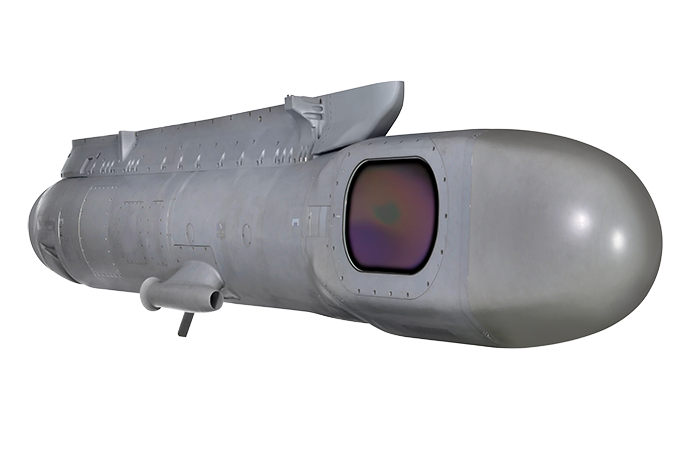
The full CNI suite includes voice communications, tactical datalinks, en route navigation and landing systems (Radalt, TACAN & MMR), and IFF identification functions (friend/foe). Digital receivers/transmitters allow the aircraft to manage secure and non-secure voice modes, datalinks and image transmissions for air-to-air and air-to-ground communications in the VHF and UHF bandwidths.
Tactical datalinks
Tactical datalinks offer a secure datalink, with an appraisal of the tactical situation, for command and control, electronic warfare, commands and reports, flight information and aircraft-to-aircraft data. In addition to the key contributors in combined air operations, this data is used with friendly aircraft in the context of training, with air and land command and control centres, forward air controllers, etc.
Combined IFF interrogator Transponders
The IFF Thales BlueGate TSB 2500 is a combined interrogator transponder, which fully satisfies civilian mode requirements. They include modes S, NATO with modes 4/5 and/or secure national modes (NSM). Furthermore, the Rafale is equipped with an E-Scan version including an Antenna Control Unit (ACU), which can be used to direct the antenna electronically.
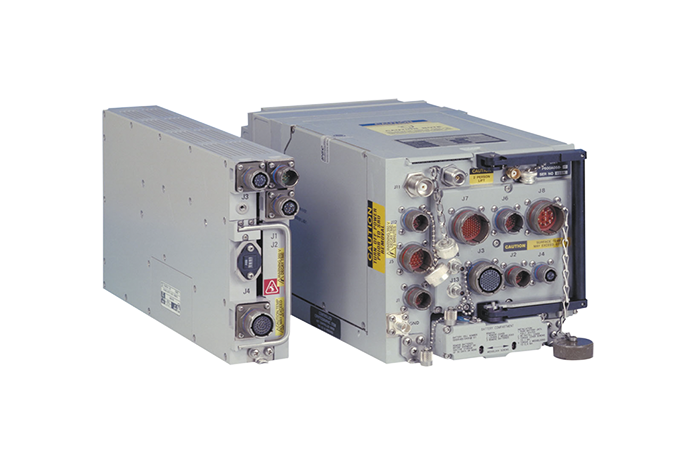
In essence, the “multi-sensor data fusion” concept implemented into the Rafale allows the pilot to act as a true “tactical decision maker”, rather than being only a sensor operator.
Designed and integrated by Dassault aviation, and developed and produced by Thales, the Rafale modular computer MDPU (“Modular Data Processing Unit”) accomplishes this data fusion.
Implementation of the “multi-sensor data fusion” into the Rafale translates into accurate, reliable and strong tracks, uncluttered displays, reduced pilot workload, quicker pilot response, and eventually into increased situational awareness.
It is a full automated process carried out in three steps:
- Establishing consolidated track files and refining primary information provided by the sensors,
- Overcoming individual sensor limitations related to wavelength / frequency, field of regard, angular and distance resolution, etc, by sharing track information received from all the sensors, assessing the confidence level of consolidated tracks, suppressing redundant track symbols and decluttering the displays
It hinges on the computing power of the MDPU to process data from the RBE2-AESA radar, the “Front Sector Optronic” (FSO) system, the SPECTRA EW system, the IFF, the MICA infrared seekers, and the data link.
The MDPU is the cornerstone of the upgradeability of the Rafale. It allows a seamless integration of new weapons and new capabilities to maintain the warfighting relevance of the Rafale over the years as tactical requirements evolve, and as the computer industry keeps rolling out new generations of processors and software.
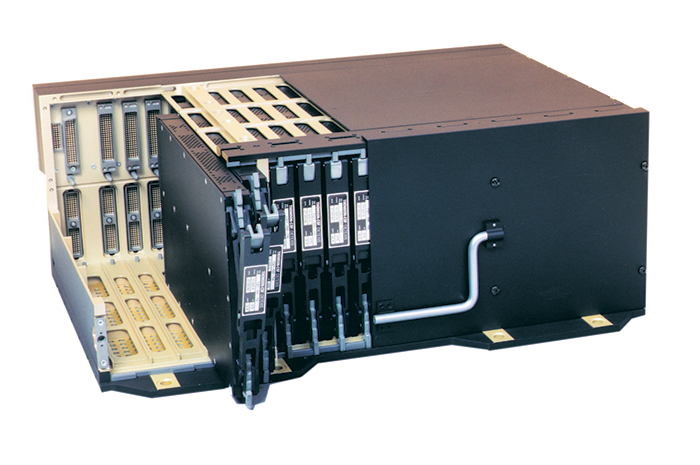
Thales’ powerful visualisation tools provide instant situational awareness for the pilot and support well-informed tactical decisions. The MMI solution includes a combined head-up/head level display and lateral displays.
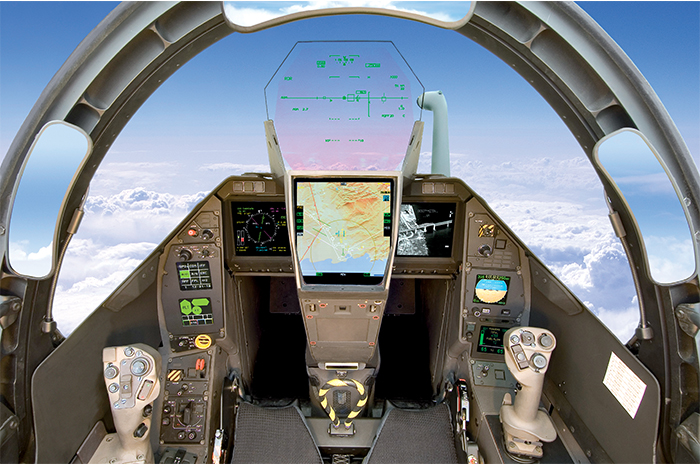
Service and Support
Support and service dedicated to the Rafale are available in different configurations, reducing life cycle costs, ensuring the operational performance of each on-board system and raising operational readiness. This innovative way of managing in-service support, called “Performance Based Logistics”, is based on guaranteed availability of equipment from the industry.
In France, in order to improve efficiency, the support and service of several suppliers are brought together in a global contract called RAVEL.
Thales also proposes these various support and service configurations to Rafale export markets.
